Exploring Predator Kites: Innovations in Kiteboarding
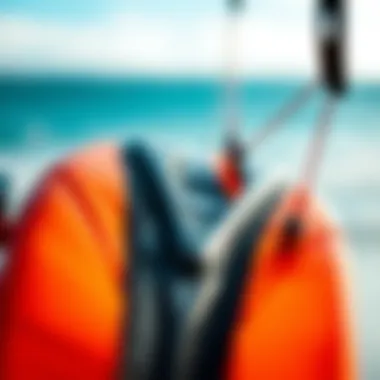
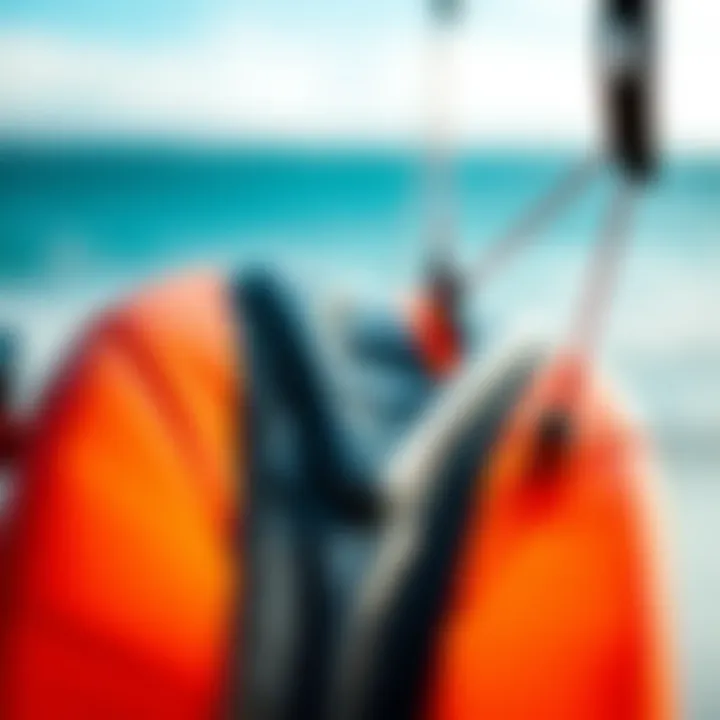
Intro
Kiteboarding has shifted gears over the years, progressing from simple designs to sophisticated machinery that champions performance and versatility. Among the forerunners of these advancements are predator kites, a new breed that promises both thrill and control on the water. But what sets these kites apart from their standard counterparts? Why are they becoming the go-to option for both budding enthusiasts and seasoned competitors?
This article embarks on a deep dive into the world of predator kites. We will navigate through their intricate design, innovative materials, and their unique functionalities. This exploration will not only shed light on how these kites evolved, but also their significance in harnessing the wind’s power more effectively, pushing boundaries in kiteboarding.
We will peel back the layers, inspecting essential characteristics that make predator kites a favorite among kiteboarders. Whether one is carving their first turn or striving for that race win, understanding the gear is crucial. By aligning our discussions with real-world applications in varying environmental conditions, we aim to offer kiteboarders of all skill levels a clear roadmap for improving their craft.
And it doesn't stop there. We will delve into the competitive landscape, highlighting the advantages predatory design brings against the traditional kites. Additionally, conversations surrounding safety practices and advanced techniques will ensure that no aspect is left unturned. So, tighten your harness and prepare to soar as we embark on this journey through the skies.
Understanding Predator Kites
Grasping the essence of predator kites is crucial for any kiteboarding enthusiast, whether a novice just getting their feet wet or an expert seeking to refine their technique. These particular kites have distinct features and functionalities that elevate the practice of kiteboarding, setting them apart from standard models. Understanding predator kites gives kiteboarders insights into how to harness the wind and water more effectively, thus enhancing their experience out on the waves.
In the following sections, we will delve into what exactly characterizes these kites, how they have progressed over time, and why this matters in practical terms. With what we know about basic kites, it’s time to explore the nuances that predator kites bring to the table. The beneficial elements might include better performance metrics, improved control, and versatility across different conditions—essentials for kiteboarders aiming to elevate their skills.
Definition and Characteristics
Predator kites are designed with advanced aerodynamics and performance in mind. Unlike standard kites, which may sacrifice speed for stability or vice versa, predator kites strike a balance that caters to serious riders looking for high performance. Key characteristics include:
- Shape and Design: Most predator kites exhibit a refined shape that enhances lift and speed. This often translates to a shorter, wider frame, which allows for quicker response times in challenging wind conditions.
- Material Composition: Utilizing specialized fabrics that are lightweight yet durable adds to their resilience in tough conditions. Many kiteboards use ripstop nylon or polyester, ensuring a strong build without unnecessary weight.
- Enhanced Control: Their design often features more attachment points and bridle systems that allow a rider to adjust the angle of attack, leading to more precise control during maneuvers.
A clear understanding of these elements can significantly benefit both performance and enjoyment. The better informed a kiteboarder is about their equipment, the smarter decisions they can make on the water.
The Evolution of Predator Kites
The journey of predator kites reflects the broader developments in kiteboarding technology and design. Initially, kiteboarding kites were basic and often bulky, making them challenging for riders to control, especially in shifting winds. Over time, as more riders pushed the envelope, a demand for high-performance kites emerged, leading to innovations that paved the way for predator kites.
From the simplistic designs in the early days of kiteboarding, advancements in materials—such as the introduction of lighter composites—have ushered in the era of predator kites. This evolution is characterized by:
- Optimization for Speed: Modern predator kites have been fine-tuned for speed and agility, making them well-suited for big air tricks or racing.
- Refinements in Stability: New bridle designs help maximize stability, ensuring that the kites maintain their course even in turbulent conditions.
- Interactive Features: More recent kites come equipped with features such as adjustable foils, allowing riders to seamlessly transition between different weather conditions.
Understanding this evolution highlights not only how far we've come but also what is next. Given the rapid progression of design principles and materials, the future holds exciting possibilities for this realm of kiteboarding.
Technical Aspects of Predator Kites
Understanding the technical aspects of predator kites is paramount for those looking to enhance their kiteboarding experience. These innovations not only elevate performance but also improve safety and stability. The intricate details surrounding materials and construction, along with design features, hold considerable weight in determining how well a kite will perform across various conditions.
Materials and Construction
Types of Fabrics
The types of fabrics used in predator kites play a crucial role in their effectiveness. Generally, you’ll find options like ripstop nylon and polyester being commonly employed. Ripstop nylon is particularly favored because of its lightweight properties and durability. This fabric can withstand the stresses that come with high-speed aerial maneuvers, making it a solid choice.
The unique characteristic of ripstop nylon is that it incorporates a grid pattern that helps prevent tearing, enhancing its lifespan while kiteboarding. However, it’s important to note that while this fabric can take a beating, it’s also slightly more susceptible to UV damage over time. In contrast, polyester might not be as resilient in terms of punctures but offers better resistance to sunlight degradation. Understanding these fabrics will aid kiteboarders in choosing the right kite for their needs.
Reinforcement Techniques
Reinforcement techniques in predator kites are what give them the edge in performance and safety. One common method is the use of Dacron material in specific areas to reinforce structural integrity. This heavy-duty fabric is often found at the leading edges and struts of kites, which are critical points that undergo significant stress.
Dacron is well-regarded for its durability and ability to handle wind pressures. Its unique property of maintaining shape under load is a game changer for controlling the kite effectively during high-intensity movements. However, one downside is that Dacron is heavier than other materials, which might affect the overall weight of the kite. That's a trade-off every kiteboarder must consider; the extra weight can sometimes lead to sluggish responses during maneuvers.
Design Features


Frame Structure
The frame structure of predator kites significantly contributes to their performance dynamics. A well-designed frame allows for optimal power distribution and better rigidity, directly impacting the kite's handling. Manufacturers often use lightweight aluminum or carbon fiber for the frame components, ensuring that while durability is a priority, weight must be minimized.
The unique feature of a carbon fiber frame is its incredible strength-to-weight ratio. This means kiteboarders can enjoy enhanced responsiveness while performing tricks. However, carbon fiber can be quite pricey. Kiteboarders on a budget may lean towards aluminum frames, which, while heavier, still offer good performance at a lower cost. The choice of frame structure ultimately boils down to personal preference and budget considerations.
Wing Shape and Profile
The shape and profile of the wings on predator kites are key in determining their overall performance. More specifically, the aspect ratio—the ratio of the wingspan to the average width—is critical. High aspect ratio wings generally permit greater lift and glide, making them suitable for high-speed flying.
The characteristic of these wings is that they result in increased performance in powered riding and give kiteboarders an edge during competitions. Some might find, however, that wings with higher aspect ratios can be less stable in turbulent conditions. It’s a classic scenario of choosing between high performance and reliability, underscoring the need for kiteboarders to understand their environment and riding style.
Kites with higher aspect ratios may allow for faster speed and elevation but can be a handful for those not used to their responsive nature.
The design and technical aspects of predator kites are inherently intertwined, shaping the overall kiteboarding experience. With the right choice in materials, reinforcements, and design features, kiteboarders can significantly enhance both recreational and competitive aspects of their sport. As you continue to explore the world of kiteboarding, an understanding of these technical elements will undoubtedly contribute to your performance on the water.
Comparative Analysis with Standard Kites
When diving into the world of predator kites, comparing them to standard kites gives valuable insight into their distinctive advantages and nuances. This comparative analysis sheds light on how these specialized kites operate, enhancing the overall kiteboarding experience.
Performance Metrics
Speed and Lift
Speed and lift are fundamental aspects that set predator kites apart from the usual models. These kites are designed to harness wind energy more efficiently, which translates directly into high lift capabilities. This means, for a kiteboarder, the more significant the lift, the easier it is to achieve those thrilling air tricks or glide smoothly across the water’s surface. Speed becomes essential during competitions or windy days when the adrenaline rush is at its peak. Predator kites often boast a unique canopy shape that optimizes airflow, creating a smoother ride compared to standard kites.
However, with this benefit comes a concern. The higher speed can also lead to a steep learning curve for newcomers; they may feel overwhelmed by the kite’s responsiveness. Striking the balance between the excitement of speed and the anxiety it can induce is critical when exploring the merits of predator kites.
Control and Stability
Control and stability are the cornerstone of any kiteboarding setup. Predator kites generally offer improved control due to their advanced design techniques. Their frame structures are engineered to resist deformation under stress, ensuring stability even in choppy waters. This reliability allows for precise maneuvering, a boon especially for experienced riders looking to execute complex tricks.
That said, and this is key, the very characteristics that grant predator kites this control, might lead to an overwhelming sensation for less experienced users. The stability of these kites can make them feel less forgiving, particularly in gusty conditions. Thus, understanding the limits of what one can handle is vital, lest one takes a tumble during a seemingly simple turn.
User Experience
Beginner vs. Expert Users
Beginner and expert users fluctuate significantly in how they engage with predator kites. Whereas professionals may appreciate the advanced functionality and features these kites bring—like the ability to carve edges and perform high jumps—beginners might find themselves struggling to harness these benefits fully. A key point is that predator kites often require a nuanced touch and understanding of wind dynamics, more so than standard models.
Moreover, premium predator kites often come packed with features that can easily baffle those just starting out. The essence of a beginner's experience can make or break their passion for the sport. As such, it's critical for novice kiteboarders to receive proper training and potentially start with simpler kites before stepping up to the advanced predator variants.
Adaptability Across Conditions
The adaptability across conditions greatly influences the overall performance a kiteboarder can achieve. Predator kites frequently shine in variable wind conditions—this versatility allows for an exhilarating ride, regardless of the breeze. Whether breezy or gusty, these kites maintain their performance, allowing users to ride confidently.
However, adaptability can, paradoxically, lead to challenges. Some kiteboarding enthusiasts may feel uncertain about the kite’s response under fluctuating wind strengths, seeing some variation in performance based on the environment, which can sometimes be tricky to gauge.
If you’re tackling varying conditions, having a solid understanding of your kite, the wind patterns, and your own skill set is indispensable. This becomes all the more pertinent as you step into the arena of kiteboarding, where conditions can shift quicker than lighting a fire in a driftwood storm.
Applications of Predator Kites in Kiteboarding
Understanding the myriad ways predator kites improve the kiteboarding experience is pivotal for both novices and seasoned riders. These kites are not just another piece of equipment; they're a leap in technology that alters the complexion of how kiteboarding is practiced. Whether you're cruising along a calm beach or navigating the swirling winds of a competitive event, predator kites hold significant advantages. They change not just performance metrics but also the enjoyment factor of the sport, making it vital to dive into their applications across different settings.
In Recreational Settings
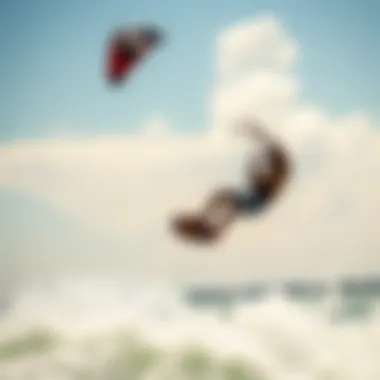
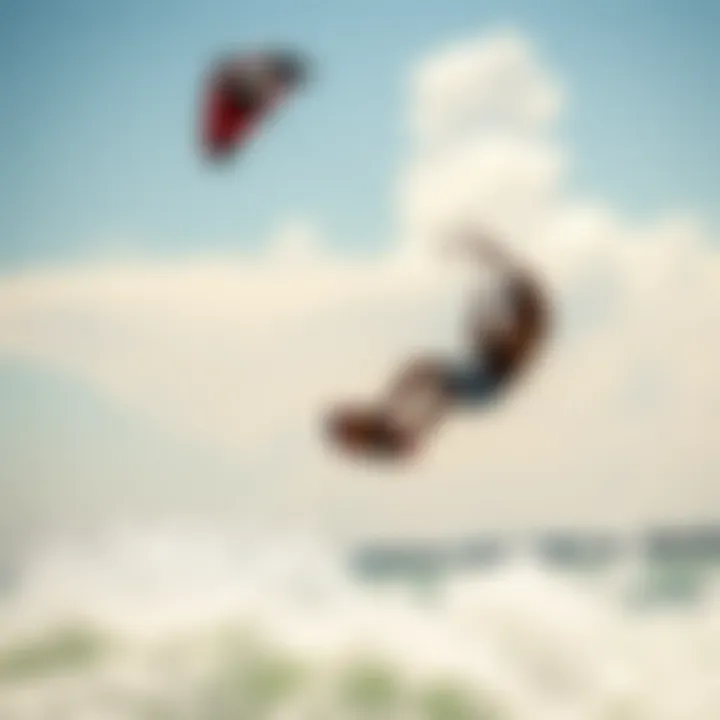
Predator kites excel in recreational environments, cushioning the learning curve for beginners and enhancing the experience for more advanced users. Flexibility is one of their strong suits. They allow riders to experiment with varying wind conditions while offering a degree of stability that is essential for learning. Beginners can benefit from the forgiving nature of these kites, gradually honing their skills without the fear of being overpowered by their gear.
In calmer settings, these kites shimmer in the light, inviting enthusiasts to soak in their surroundings. The ability to maneuver and perform basic tricks becomes less daunting, encouraging riders to push boundaries and explore. Moreover, predator kites often come with adjustable settings that allow users to customize their ride based on individual experience levels.
In Competitive Scenarios
In the cutthroat world of kiteboarding competitions, predator kites can often mean the difference between victory and defeat. An in-depth understanding of their strategic use can lead to favorable outcomes in races and freestyle events.
Strategy and Tactics
Strategy in kiteboarding with predator kites hinges on understanding wind patterns and anticipating shifts during a session. Riders who grasp these dynamics can effectively position themselves to maximize their kite's lift and speed.
Key characteristics include:
- Responsive handling: Predator kites react swiftly to steering inputs, allowing riders to make precise adjustments mid-flight.
- Variable control: Depending on the kite’s setting, a rider can decide whether to go for speed or stability, tailoring their approach based on the competition scenario.
For competitors, this tactical flexibility becomes a critical asset. A rider that swiftly adapts their strategy can gain a distinct edge. However, it requires experience—balancing between maneuverability and raw speed is not something every novice will grasp right away.
Advantages of employing such strategies include:
- Enhanced performance metrics.
- Greater confidence in execution.
Disadvantages may arise if the kite’s capabilities are misjudged or if the rider overcommits to speed without mastering control.
Influence on Competitions
The presence of predator kites in competitions sets a new benchmark, transforming the sport's landscape. These kites challenge traditional designs and push competitors to adapt.
One notable influence is their role in elevating overall performance across competition levels. Features like enhanced lift and greater directional control enable riders to execute difficult maneuvers that would be unthinkable with standard kites.
Key characteristics include:
- Advanced aerodynamics: These kites are designed to cut through air more efficiently, leading to faster speeds and improved handling.
- Diverse applications: Whether in a race or a freestyle showdown, the adaptability of predator kites allows for various tactical executions, dictating the flow of the competition.
Through fostering an environment where riders must innovate with their tactics, predator kites help push the sport forward. While there may be a steep learning curve for adapting to these advanced kites, the potential for performance leaps creates an irresistible pull for serious competitors looking to refine their skills.
"In competitive kiteboarding, the kite isn't just gear—it's an extension of the rider’s will, forging pathways to victory in the air."
Equipped with these insights, enthusiasts will realize that predator kites are not merely tools but rather vessels of potential that create a refreshing landscape of opportunities to explore in kiteboarding.
Safety Considerations with Predator Kites
Understanding safety when using predator kites is crucial. Kiteboarding, while exhilarating, comes with its own set of risks. Paying attention to safety considerations can make all the difference between a memorable experience and a dangerous situation. When one dives into this advanced realm, comprehension of how to mitigate risks and respond to emergencies is essential. The joy of kiteboarding is undoubtedly tied to the capability of handling power and adaptability in various conditions. Thus, we explore key aspects pertaining to risk management and essential gear that contribute to safer practices on the water.
Risk Management
Common Accidents
When kiteboarding, common accidents can dramatically impact the overall experience. One of the prevalent issues is known as the "downed kite" scenario, where the kite falls and creates a potential hazard for the rider. This often results from sudden drops in wind or equipment failure. Identifying this risk is important because it emphasizes the necessity of equipment checks before launching. Addressing aspects such as tether lengths and the proper securing of the lines can prevent accidents. In this article, the examination of common accidents is not just about awareness; it's about fostering a culture of safety and improving skill around managing risks.
Another significant incident involves collisions and entanglements, typically occurring because of crowded conditions at popular surfing spots or misjudgments during maneuvers. These risks are heightened when mixed groups of beginner and expert kiteboarders share the same area. In light of these considerations, the importance of training in situational awareness stands out. Highlighting real-life experiences from seasoned kiteboarders assists in navigating these common pitfalls.
Preventative Measures
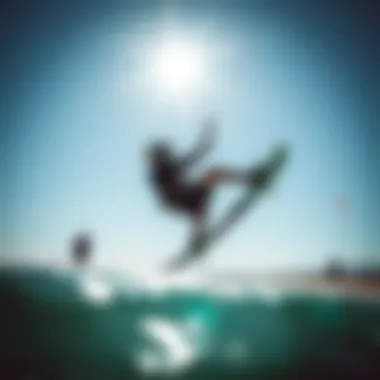
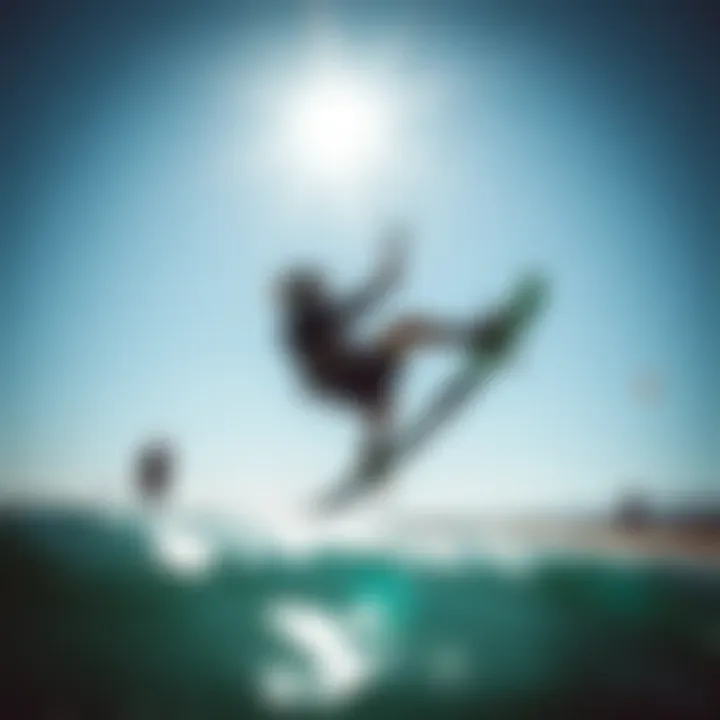
It’s one thing to know about common accidents; it’s another to have solid measures preventing them. Practicing effective preventative measures is paramount for ensuring a secure experience. One significant preventative tactic is having a strong understanding of weather patterns. Before hitting the water, checking forecasts can avert a decision that leads to dangerous situations. The unique point here is not just understanding your local conditions but also adapting to them. Choosing the right kite size based on wind strength can help avoid unforeseen mishaps.
Training sessions focusing on emergency procedures, such as self-rescue techniques, can also work wonders. Practicing how to handle situations if a kite goes down or if the lines become tangled creates an awareness that is invaluable in high-pressure moments. Here, the value lies in preparation and visualization of scenarios that can go awry. Engaging with the kiteboarding community allows individuals to exchange these vital tips, not only enhancing their own safety but also contributing positively to the wider culture.
Essential Gear and Tools
Safety Harnesses
Having a good safety harness is essential in kiteboarding, as it provides security and comfort during maneuvers. The choice of harness can often be the factor that either enhances or detracts from a kiteboarder’s performance. Many riders favor a waist harness due to its lightweight nature, while others opt for a seat harness for extra support during aggressive rides. The unique feature of safety harnesses is that they distribute the pull of the kite evenly across the body, reducing the chances of fatigue and injury. This is particularly relevant in the context of predator kites, which often generate significant power. The benefit of having a well-fitted harness cannot be overstated; it means you can focus on enjoying the ride rather than worrying about your gear.
Emergency Protocols
As kiteboarding enthusiasts, it is crucial to have effective emergency protocols in place. Knowing what to do in an emergency can save lives and property. One fundamental aspect of such protocols is learning how to signal for help. Often, simple hand signals can communicate distress in a crowded kiteboarding environment. Furthermore, understanding your responsibility to assist others in trouble reinforces a community-focused approach to safety.
Developing an emergency action plan before venturing into kiteboarding sessions is key. For example, recognizing designated safe zones or learning the proper methods for getting help when needed can make all the difference. The distinctive part of these protocols is that they empower kiteboarders to take charge in emergencies, reducing panic and encouraging calm responses.
In summary, integrating these safety considerations into kiteboarding practice is essential. Through awareness of common accidents, implementing preventative measures, and using essential safety gear, kiteboarders not only protect themselves but also foster a safer environment for everyone involved. By embracing these practices, we set ourselves up for exhilarating and, most importantly, secure kiteboarding adventures.
Future Trends in Predator Kite Design
The realm of predator kite design is undergoing a significant transformation, influenced by a host of technological advancements and an increasing focus on sustainability. Understanding these trends is crucial for kiteboarders, instructors, and enthusiasts aiming to remain at the forefront of the sport.
As kiteboarding continues to agglomerate a dedicated following, the innovation landscape reveals exciting opportunities tailored specifically for enhanced user performance and environmental consciousness. With every twist and turn in kite technology, the designs evolve, reflecting both user needs and modern technological capabilities.
Innovations in Technology
In recent years, the kiteboarding industry has seen a surge in technological innovations that not only enhance performance but also improve the overall experience for users. Here are some of the notable advancements:
- Smart Materials: Manufacturers are increasingly using intelligent materials designed to respond to environmental conditions. For instance, some kites now incorporate membranes that adapt their firmness based on wind pressure, optimizing lift and control.
- Integrated Sensors: The integration of sensors within kite structures enables real-time data collection on performance metrics, allowing riders to adjust their techniques based on tangible feedback. This capability can significantly enhance learning curves for novices and unlock new strategies for experts.
- Hybrid Designs: Kite designs are gradually incorporating both fixed and inflatable structures, resulting in enhanced durability without sacrificing performance. This blend can provide a more versatile riding experience, accommodating a wider range of conditions.
The importance of these innovations cannot be overstated. Riders who leverage the latest technology can gain competitive advantages, making informed adjustments for optimal performance. Furthermore, the integration of high-tech features serves to engage tech-savvy younger generations, potentially growing the sport even more.
Sustainability in Manufacturing
While advanced technology sets the stage for performance enhancements, sustainability is becoming a non-negotiable part of kite development. The kiteboarding community increasingly prioritizes eco-friendly practices. Consider the following aspects:
- Biodegradable Materials: Some manufacturers are experimenting with biodegradable fabrics made from natural fibers, which decompose more easily than traditional polyester materials. This shift is essential in reducing the long-term environmental impact of kiteboarding gear.
- Recycling Programs: Brands are initiating take-back programs, wherein damaged or outdated kites can be returned to manufacturers for recycling. This practice encourages a circular economy within the sport.
- Local Sourcing: There’s a noticeable trend towards sourcing materials locally, reducing the carbon footprint associated with transportation. This also encourages support for local economies and labor.
As kiteboarding develops, integrating sustainability into manufacturing isn’t just a trend; it’s a necessity that aligns with the values of the community at large. Boarders are increasingly seeking out brands that reflect their own commitment to protecting the natural environments in which they ride. The future of predator kites will undoubtedly be shaped by those who prioritize both innovation and environmental stewardship.
"The integration of technology and sustainability in kite design is not just a trend; it's a commitment to the future of kiteboarding and the preservation of our planet."
These trends shed light on the adaptive nature of predator kites, proving that the evolution of design is as much about performance as it is about our responsibility to the earth. As we move forward, one can only anticipate more striking developments, potentially redefining our expectations in the world of kiteboarding.
Community Insights: Sharing Experiences
The notion of community within kiteboarding isn’t just about enjoying the sport; it’s a fundamental pillar that supports learning, safety, and innovation. When it comes to predator kites, the shared experiences among users form a rich tapestry of knowledge that can help both novices and seasoned kiteboarders refine their skills and deepen their understanding.
User Experiences with Predator Kites
The diverse experiences of kiteboarders with predator kites can illuminate various facets of their performance and usability.
- Firsthand Trials: Several kiteboarders have taken to the skies, sharing tales of their initial trials with different predator kites. A common theme reflects how the learning curve differs; some find the transition from standard kites to predator kites a breeze, while others mention initial difficulties in handling.
- Conditions Impact: Many users emphasized that the kite's responsiveness and performance were notably different under varying conditions. For instance, while some predator kites thrive in high winds, others may easily become troublesome in lighter conditions. Here, anecdotal evidence from experienced riders suggests choosing the right kite based on environmental factors can greatly enhance performance.
- Durability and Maintenance: Another frequent topic of discussion among kiteboarders is the kite's durability. Users have noted how predator kites generally withstand rough handling better than other types. Sharing tips on maintenance practices—like checking for wear and tear regularly—helps the community ensure the longevity of their gear.
"The real thrill comes when you're battling strong winds and your predator kite just holds steady, it's like dancing with the ocean."
Collective Knowledge and Resources
The wealth of information gathered through community interactions plays a pivotal role in enhancing the kiteboarding experience. The concept of collective knowledge in this arena manifests through various avenues:
- Online Forums and Groups: Places like Reddit (reddit.com/r/kitesurfing) provide platforms where enthusiasts can post queries or share insights. Users often provide detailed breakdowns of their kite setups, detailing which lines perform best at different wind conditions.
- Local Workshops and Meetups: Many regions have local kiteboarding communities that organize workshops or meetups. Sharing experiences face-to-face fosters deeper relationships, and often facilitates more practical learning aids, like hands-on techniques for setting up and adjusting predator kites.
- Video Tutorials and Blogs: An increasing number of kiteboarders have taken to creating video content or blogs (e.g., on platforms like YouTube) to document their journeys. Such resources offer visual learning opportunities and can address common questions about predator kite usage.















